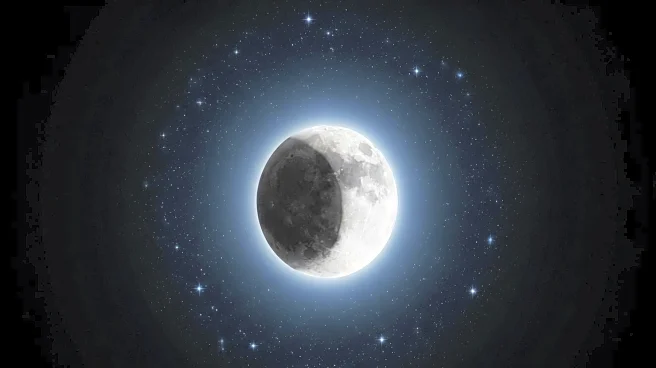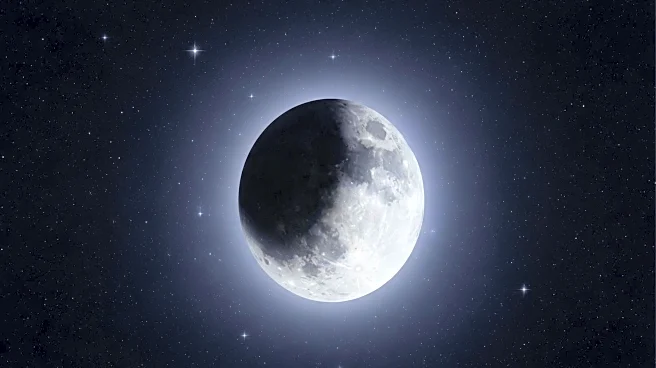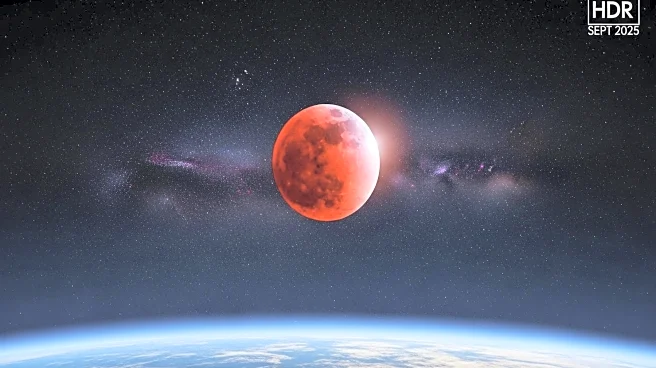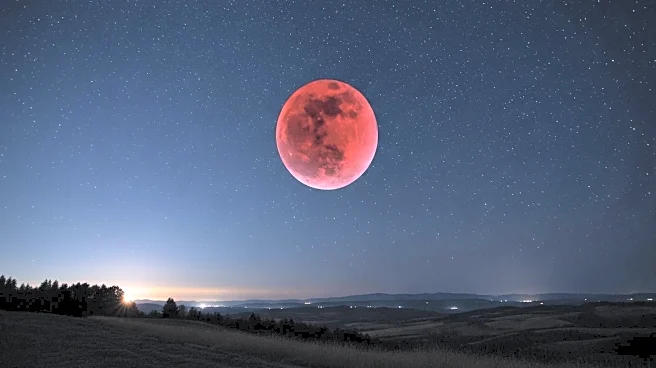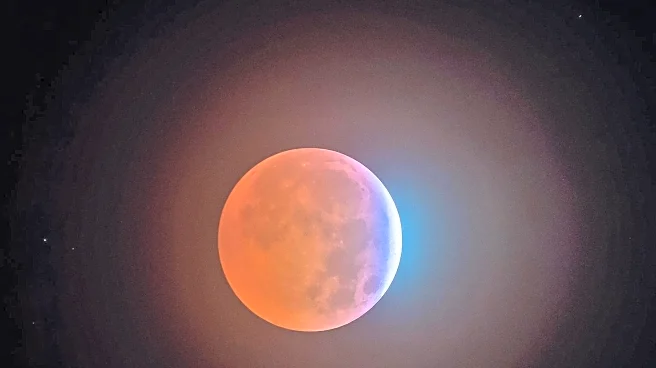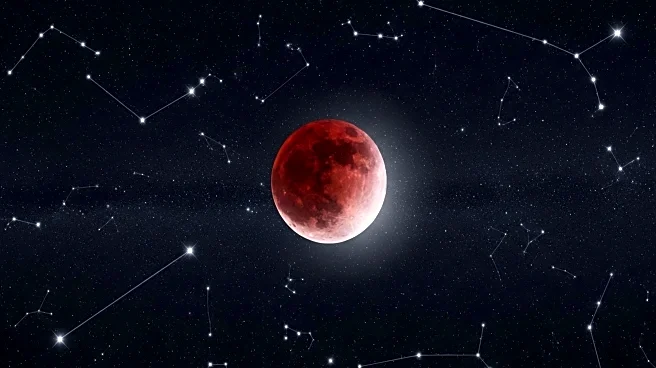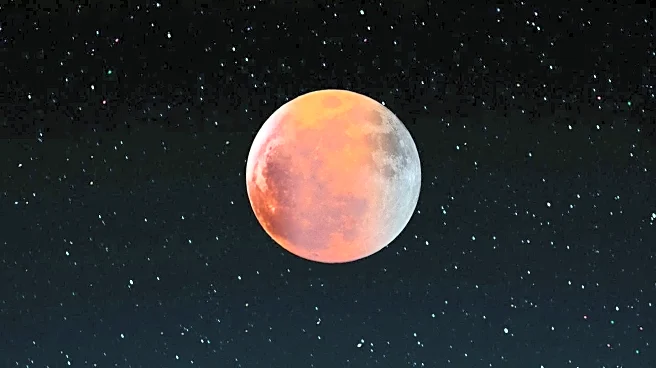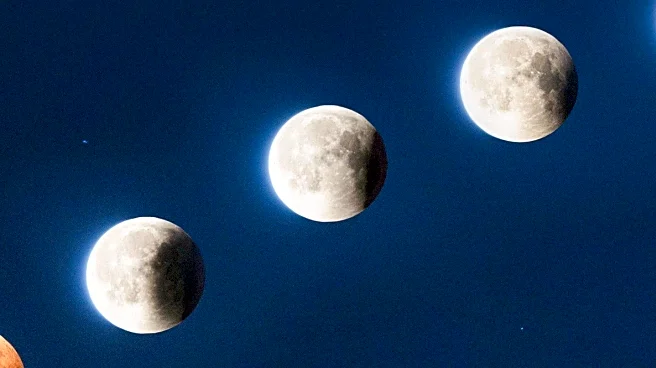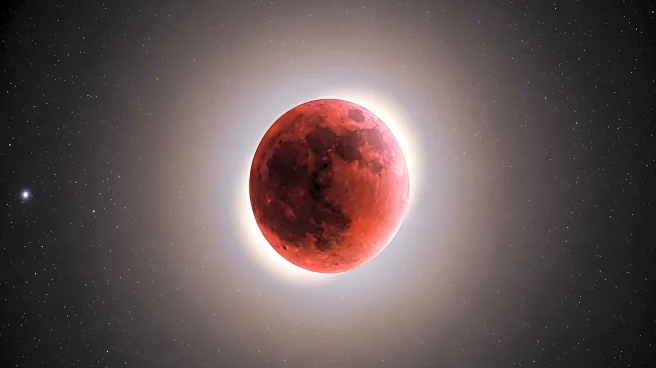What's Happening?
On September 7, 2025, a total lunar eclipse, known as 'Chandra Grahan,' will be visible to over 7 billion people worldwide. This rare celestial event will be observable from nearly every inhabited continent, including Asia, Africa, the Americas, and Oceania. The eclipse will feature an unusually long totality phase lasting 82 minutes, during which the moon will appear as a 'blood moon,' glowing in shades of red and orange. This phenomenon occurs when the Earth aligns perfectly between the sun and the moon, casting its shadow across the lunar surface. The event is significant not only for its scientific value but also as a shared global experience, attracting astronomers, photographers, and casual skywatchers alike.
Why It's Important?
The 2025 lunar eclipse is a significant astronomical event due to its extensive visibility and long duration. It offers a unique opportunity for scientific research, allowing astronomers to study atmospheric conditions by observing how sunlight refracts through Earth's atmosphere. This can provide insights into the presence of dust, aerosols, and pollutants in the stratosphere. Additionally, the eclipse serves as a cultural and spiritual event in various regions, with traditions such as fasting and temple closures observed during the inauspicious 'sutak kaal' period in India. For enthusiasts, it presents a chance to engage in astrophotography and share the experience globally.
What's Next?
As the date approaches, preparations for viewing the eclipse will intensify. Skywatchers are advised to find locations with minimal light pollution and to use binoculars or telescopes for enhanced viewing. Community events and live streams will be organized to facilitate public participation, especially in areas with unfavorable weather conditions. Scientists will continue to plan observations to maximize research opportunities during the eclipse. The event is expected to generate significant interest and engagement across social media platforms, fostering a sense of global connectivity.
Beyond the Headlines
The lunar eclipse highlights the intersection of science and culture, demonstrating how celestial events can unite people across different backgrounds and beliefs. It underscores the importance of preserving dark sky areas to enhance astronomical observations and raises awareness about atmospheric pollution. The event also serves as a reminder of the natural wonders that can inspire collective awe and curiosity, promoting interest in astronomy and science education.
